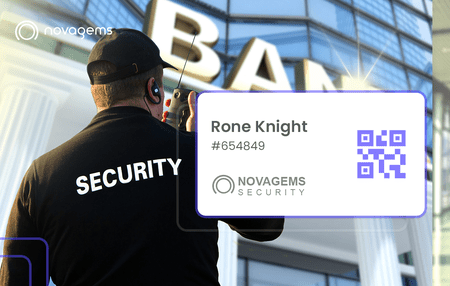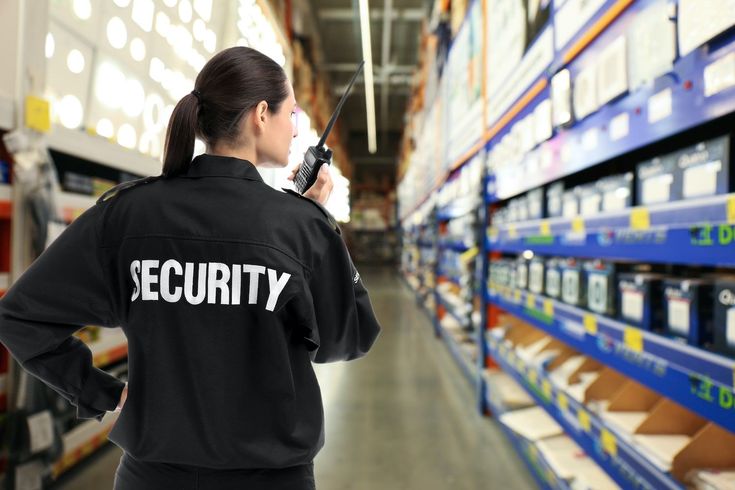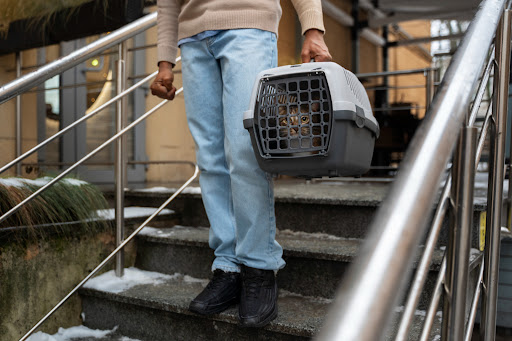The twinkling lights, bustling aisles, and the constant hum of activity – the retail world is a vibrant place. But beneath the shiny surface lies a constant need for vigilance. In this high-paced environment, security guard management takes on a unique character, needing to adapt to the ever-changing dynamics of the retail landscape.
So, how do you ensure your security guards are more than just watchful eyes in uniforms? How do you tailor their duties and strategies to the specific challenges and opportunities of the retail world? In the dynamic world of retail, ensuring the safety and security of both customers and assets is paramount. The retail sector comes with its own set of unique challenges, and tailoring security guard management to fit these specific needs is crucial for success.
Understanding the Retail Environment
Balancing Act: Customer Experience vs. Security
The retail environment is all about creating a positive and seamless customer experience. Security measures must be implemented discreetly to avoid disrupting the shopping journey. Striking the right balance is key.

High Traffic, High Risk: Crowd Management
Busy retail spaces often face challenges related to crowd management. Effective security guard management involves strategies to navigate large crowds, preventing incidents and ensuring a smooth flow of customers.
Balancing Security Measures with Customer Experience
Customers should feel safe without feeling overly surveilled. Security guard management involves creating an environment where security measures are seamlessly integrated, contributing to an overall positive customer experience. Everything revolves around providing a positive experience for shoppers. From the moment customers enter the store until they leave, their journey should be seamless and enjoyable. This includes factors like store layout, product placement, and overall ambiance.
Handling Retail Security Incidents with Discretion
In the event of a security incident, how security guards respond matters. Training security personnel in discreet and professional handling of incidents is a key aspect of effective security guard management. Trends change swiftly, and customer preferences evolve. Staying attuned to these shifts is key. Retailers need to be agile, ready to adapt their strategies to meet the ever-changing demands of the market.
In the retail environment, foot traffic is the heartbeat. Understanding peak hours, popular sections, and the flow of customers helps in optimizing staff placement and ensuring a smooth shopping experience. This involves not only attracting customers but also efficiently managing the crowd to prevent congestion and ensure safety.
Another crucial aspect is the diversity of products. Unlike other industries, retail often deals with a wide range of items. Understanding the specific needs and challenges related to various products ensures that the right security measures are in place. For example, high-value items might require extra surveillance to prevent theft.
Lastly, the retail environment extends beyond the physical store. With the rise of online shopping, retailers must also navigate the digital landscape. Understanding the synergy between the physical and digital aspects of retail is vital for a holistic approach to security.
Customized Security Strategies for Retail
Building Soft Skills:
Retail security isn’t just about deterring crime; it’s about creating a safe and welcoming environment for customers and employees. This is where soft skills come into play. Guards need to be courteous, communicative, and adept at de-escalating situations. A friendly smile and a calm demeanor can often diffuse a tense situation more effectively than a stern glare. Invest in conflict resolution training and encourage guards to build positive relationships with store staff and customers.
Tech-Savvy Sentinels:
The days of clipboards and handwritten reports are fading fast. Embrace technology to empower your guards and enhance their effectiveness. Mobile patrol apps with GPS tracking ensure real-time monitoring of movements and timely responses to incidents. Consider providing body cameras to deter crime and provide valuable evidence when needed. Remember, technology is a tool, not a replacement for human interaction, so ensure proper training and ethical guidelines for responsible tech use.
Data-Driven Decision Making:
Security isn’t just about gut feeling; it’s about data-driven insights. Analyze reports, crime patterns, and guard patrol data to identify hotspots and adjust strategies accordingly. Are certain days or times seeing more incidents? Are specific areas more vulnerable? Use this data to optimize patrol routes, allocate resources efficiently, and tailor training programs. Remember, data is your friend, helping you make informed decisions that truly enhance security.
Fostering Teamwork and Communication:
Security guards in retail aren’t lone wolves; they’re part of a team. Encourage close collaboration with store staff, ensuring open communication about suspicious activity, customer concerns, and potential threats. Regular security briefings and drills can create a proactive culture where everyone is aware of their role in maintaining a safe environment.
Adaptability is Key:
The retail world is constantly evolving, with new trends, technologies, and security challenges emerging all the time. Flexibility and adaptability are crucial for effective security guard management. Be prepared to adjust strategies and training to address new threats and changing customer behavior. Encourage guards to be observant, adaptable, and open to learning new skills.
The Unique Challenges of Retail Security
High Traffic, High Risk: Busy retail spaces bring increased foot traffic, presenting challenges in crowd management. Handling large crowds efficiently while maintaining security is a priority.
Loss Prevention: Retailers often deal with theft and fraud. Implementing effective loss prevention measures is essential to safeguard merchandise and assets.
Diverse Products: The retail sector involves a vast array of products, each with its own security considerations. Understanding the diversity helps tailor security strategies to specific needs.
Digital Landscape: With the rise of online shopping, retail security extends into the digital realm. Cybersecurity threats and the seamless integration of online and offline security measures pose additional challenges.
Conclusion
Tailoring security guard management to the retail sector involves a deep understanding of the unique challenges and requirements of this dynamic environment. Striking a balance between security measures and a positive customer experience, integrating technology, and fostering collaboration between security teams and retail management are all vital components. By focusing on these aspects, retail establishments can create a safe and secure shopping environment, fostering trust and loyalty among customers.




